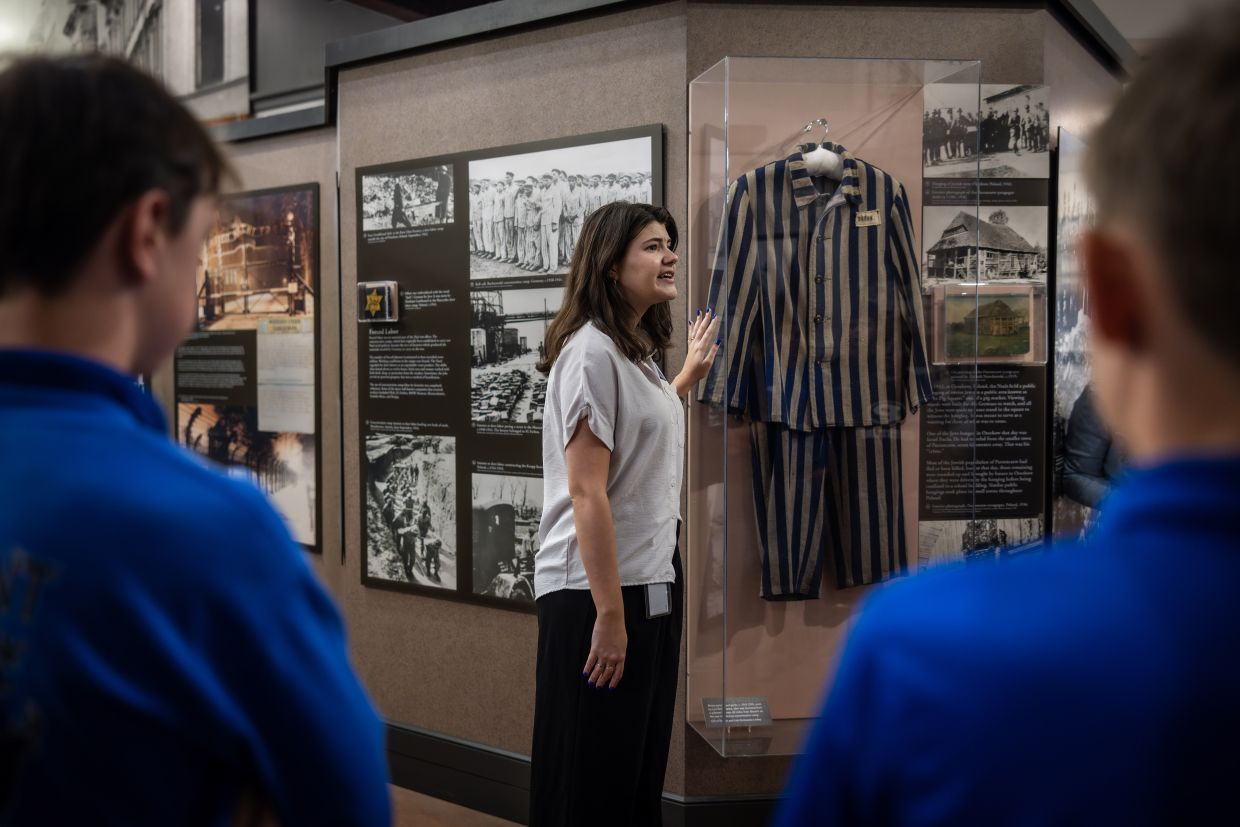Visitors making their way through the Tower of Faces at the United States Holocaust Memorial in Washington DC. Will the number of visitors fall as the war continues? — ©2024 The New York Times Company
AT a Holocaust museum in Atlanta, staff members had typically ended their tours by saying that many survivors of the death camps immigrated to the Palestinian territories.
But after the start of the Israel war on Gaza, the guides noticed that some students would ask a simple but complicated question: Is this the Gaza Strip that we’ve been hearing about?
Uh-oh! Daily quota reached.

Questions on Palestine and Gaza
The docent Ariana Gil speaks to a school group from Monticello at the Breman, a Holocaust museum in Atlanta. — Photos: ©2024 The New York Times Company
The docent Ariana Gil speaks to a school group from Monticello, Ga., at the Breman, a Holocaust museum in Atlanta, April 17, 2024. (Audra Melton/The New York Times)
Rabbi Joseph Prass, the education director at the Breman, speaking to a school group from Monticello.
Rabbi Joseph Prass, the education director at the Breman, a Holocaust museum in Atlanta, speaks to a school group from Monticello, Ga., April 17, 2024. (Audra Melton/The New York Times)






